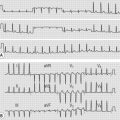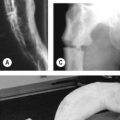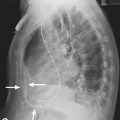125 Abdominal masses
Patient 1
Diagnosis
• Carcinoma of the stomach: look for supraclavicular lymph nodes, hepatomegaly; comment on pallor and asthenia
• Carcinoma of the pancreas: look for jaundice
• Aneurysm of the abdominal aorta: look for pulsatile mass, check femoral and foot pulses, auscultate over the mass and the femoral pulses (p. 455)
Patient 2
Diagnosis
• Crohn’s disease: look for mouth ulcers; tell the examiner that you would like to look for fistulae and take a history for chronic diarrhoea (p. 778)
• Carcinoma of the caecum: look for hard mass, lymph nodes
• Enlarged lymph node: look for enlarged nodes elsewhere, feel for liver and spleen, examine the drainage area of iliac lymph nodes (such as the leg, perianal area, external genitalia) do a rectal examination)
• Transplanted kidney: comment on the laparotomy scars, stigmata of renal failure and artificial arteriovenous fistulae
• Iieocaecal abscess, particularly in Asians
• Ovarian tumours (must be mentioned as a differential diagnosis in female patients).
Patient 3
Diagnosis
• Diverticular abscess: look for tender, mobile mass
• Carcinoma of the colon: look for hepatomegaly; tell the examiner that you would like to do a per rectal examination
• Faecal mass (the mass may be moulded by pressure)
• Enlarged iliac lymph nodes: look for enlarged nodes elsewhere, feel for liver and spleen, examine the drainage areas
• Transplanted kidney: comment on the laparotomy scar, look for signs of renal failure, arteriovenous fistulae (p. 812).
Note: The investigation of first choice in such patients is abdominal ultrasonography.






